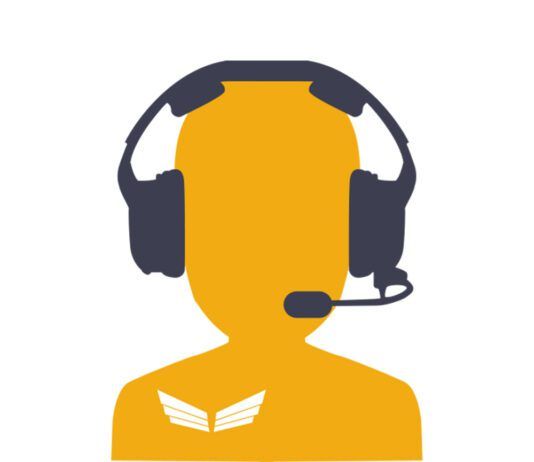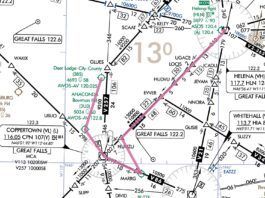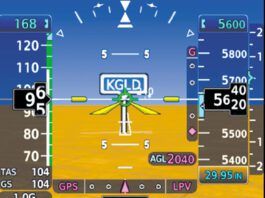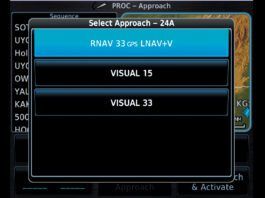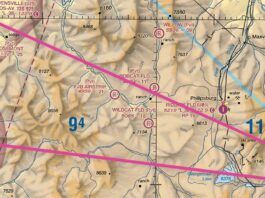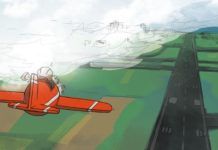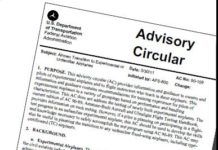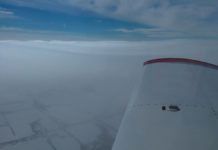The Great Experiment
Alexis de Tocqueville, a 19th-century French historian, described the United States as a great experiment. He called it an attempt to construct society upon a new basis, founded on theories previously unknown or impracticable. Another great experiment is occurring, this time in aviation.In 2006, ICAO quietly passed the Multiple-Crew Pilot License (MPL). ICAO recognized that many countries trained airline pilots using ab initio programs. These zero-to-hero courses put people with no previous flying experience into the right seat of an airliner in the shortest time possible. The MPL-supplanting the normal path through private and commercial licenses-replaces most piston flying with advanced simulators.
Briefing: October 2015
The FAA raised concerns this summer over the escalation of pilot reports of drone encounters, with 650 reports in the first half of the year, nearly three times as many as in all of 2014. Encounters occurred at altitudes up to 10,000 feet and were reported by aircraft from helicopters to airliners. Conflicts with firefighters also were on the rise. In August, the Transportation Departments Office of Inspector General said it would launch an audit to scrutinize the FAAs procedures for allowing drone operations in the national airspace.
Bet-Winning Factoids
A poopy day at the airport finds you and your buddies sitting around engaged in a serious session of hangar flying. You decide to amaze the other airport bums with some interesting factoids about METARs and maybe even win a beer bet in the process.
You Cant Land on That
Meadows Field in Bakersfield, California (KBFL) lies at the southern end of the San Joaquin Valley. For purposes of instrument flight, we call this area a huge temperature inversion waiting to happen. And when it does, the minimal visibility means well want to know exactly where we should squeak the tires at the landing end of a precision approach. At KBFL, its not where youd expect at first glance.
Filling in the Gaps
When I trained for my private pilot certificate, 91.103 was drilled into my head. Each pilot in command, it says, shall, before beginning a flight, become familiar with all available information concerning that flight. The core of that is straight from the Boy Scouts: be prepared. Now, as an air traffic controller, it concerns me when pilots arent aware of major issues affecting their flight. Sometimes we controllers have to be the voice of reason, preventing a pilot from doing something that may not be in his best interest. Other times, we have to hold his hand and walk him through a new situation. Thankfully, the vast majority of our operations are routine. Its the remainder that can make things interesting. Facing an underprepared or overzealous pilot can test a controllers knowledge of his rules, his airspace, and his ability to think outside the box to find a safe, legal solution.
Authorization Required
You can do a lot with an instrument rating and appropriately equipped aircraft-slice through clouds, take-off zero-zero and fly VOR, ILS, GPS and even (if you care) NDB approaches. None of these operations require special qualifications beyond the instrument rating. For example, many of us got instrument ratings before GPS, yet were authorized to fly GPS approaches. But, there are things an instrument-rated pilot cant do, even with certified equipment. Wanna fly a CAT II approach? Sorry. How about an ILS CAT I SA or RNAV (RNP)? Nope, cant do those either. What gives?
Maybe You Shouldnt Do that
I once undertook a ferry flight that was, well, dumb. Similarly, a type-specific magazine I get recently ran a true-confessions story by a pilot who, in the clarity of hindsight, probably should have missed, not landed.Most of us accomplished pilots (as the masthead says) can do far more in an airplane than we should. What does that mean? Well, I mean we probably could, for example, safely fly an airplane that isnt quite airworthy or perhaps we could complete an approach to a landing using abnormal maneuvers and live to tell (or brag) about it later.
A Tale of Two Pilots
Pilots retiring from professional flying and downsizing into personal aircraft often want to fly something thats capable, yet simple and efficient. Thats understandable, as they want to use their extensive experience. Theyre also flying for themselves (and paying for it), so an airplane that economically delivers practicality and enjoyment is the goal. The following examples reflect the common downsizing profiles Ive seen.
So, Your New Ride is Smaller
Shrinking size, horsepower and number of engines requires big adjustments as you ease into the life of a light-airplane pilot. But smaller and simpler still requires proper transition training.
Down-Transitions
Many of our ranks are professional pilots because they simply love to fly. They find a way to fly no matter what. For them, retiring from a career in aviation simply means they no longer get paid to fly, but theyll find a new ride. These are usually superb pilots-pilots pilots-but they can sometimes struggle when transitioning from a magic carpet with dual FMS, dual radar, dual engines, surplus power, autothrottles…and redundant redundancy. Of course, there are also many owner-operator pilots who fly sophisticated aircraft ranging from bizjets to piston twins who similarly find themselves looking for a new way to sustain that aviation fix as they retire.
Briefing: July 2015
More than 4400 comments were filed in response to the FAAs proposed rule for allowing small unmanned aircraft into the national airspace system, and the general aviation advocacy groups had their say. EAA, AOPA, and the General Aviation Manufacturers Association all said the FAA should lower the ceiling for small UAS operations to 400 feet, instead of the proposed 500 feet, to provide a bigger buffer between UAS and manned aircraft. Other suggestions included requiring UAS to automatically terminate flight if communications are lost, and ensuring that the operators of manned aircraft arent required to add new equipment as a result of UAS integration. The FAA will now review the comments before publishing a final rule, which is expected to take up to 18 months.
Readback: June 2015
I read your editorial The Drones Are Here with interest. You asked the question When was the last time you flew below 400 feet away from an airport? My answer is: yesterday.As a seaplane pilot, I do this all the time over bodies of water. So do thousands of other seaplane and helicopter pilots. There is no way on earth that we would ever be able to see and avoid these tiny toy aircraft-at least not in time for the avoid part-and for sure, their untrained operators would not be likely to anticipate and avoid us. It is not a matter of if, but when someone will be killed by these dangerous drone operations. I guess our lives are less important than the interests of hundreds of thousands of drone hobbyists.

